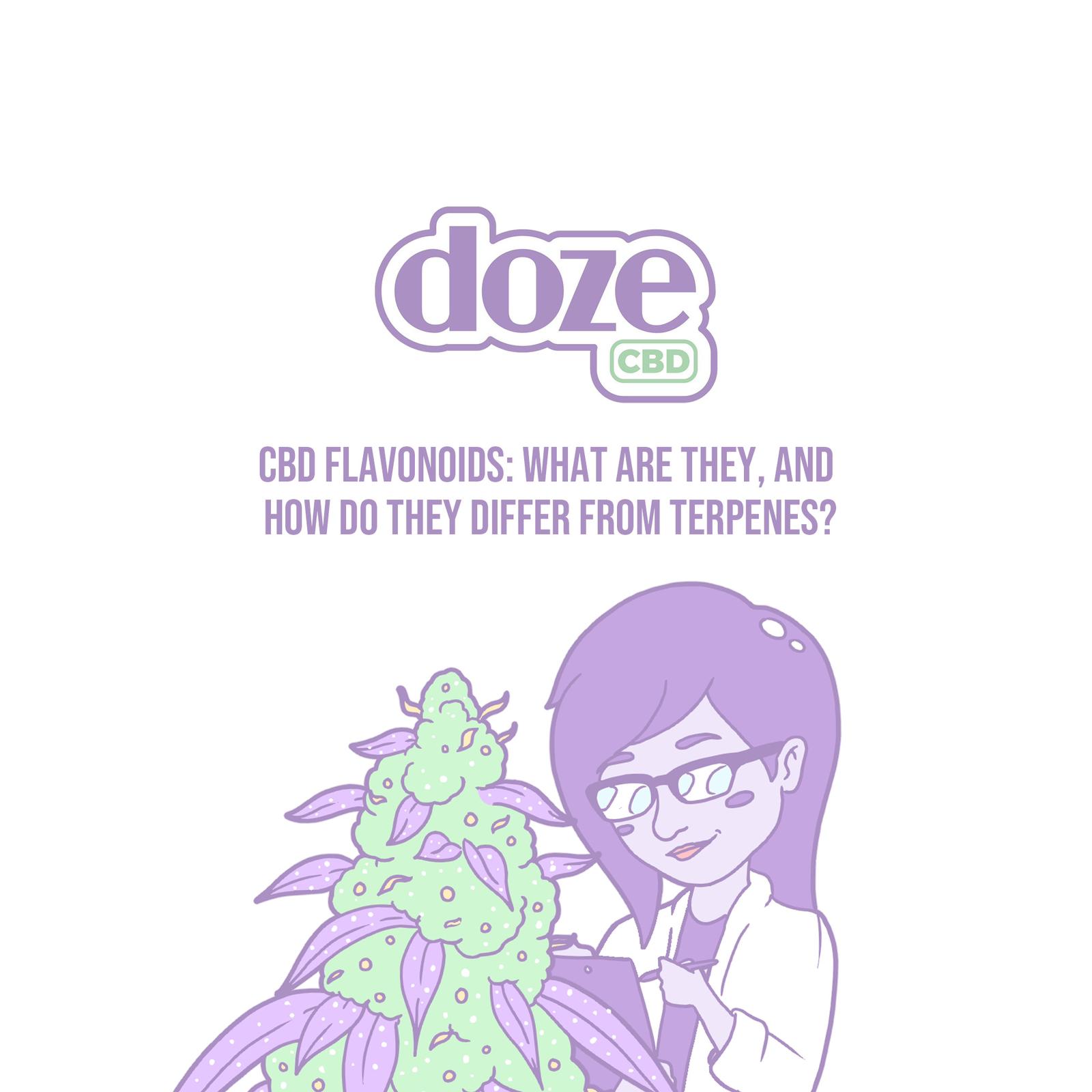If you’ve spent any time reading up on CBD – or the magical leaf it comes from – then there’s a good chance you’ve already encountered some talk of flavonoids. While they may sound like a sweet or savoury sci-fi creation from the 1980s – we’re sure we watched ‘Attack of the Flavonoids’ back in the day – they’re actually a lot more interesting, and a lot more pertinent for anyone doing their hemp homework.
While you may not be familiar with their name, you’re probably a lot more familiar with flavonoids than you might think. While they’re often brought up when the subject is on hemp flowers and CBD, they’re actually found across the plant world – and, as a result, on the dinner table too.
Before you start fumbling around, looking for a polite way to tell Flavonoids that you just can’t place them, relax. We’re going to get you on friendly terms with these fascinating little compounds.
What are flavonoids?
Flavonoids are metabolites, but they were almost exclusively referred to as Vitamin P up until the middle of the twentieth century.
A metabolite is any product created during or as a result of metabolism. And, yes, plants do go through many metabolic activities. Photosynthesis – that favourite of secondary school chemistry – is an example of plant metabolism.
It’s easy to jump to the conclusion that flavonoids impact flavour, but, in actual fact, they’re responsible for a plant’s colour, rather than its taste. Their name is derived from the Latin word for yellow – ‘Flavus’.
If you’re looking to explore hemp’s wonderful world of flavour, then terpenes, which we’ve covered in this post, will be right up your street.
In addition to yellow, flavonoids can produce red and blue pigments in plants. The different combinations of flavonoids (of which there are more than 5,000 across the natural world) is what creates such a rainbow of hues, from the red of a polished apple to the purple (read: violet) of sprouting broccoli.
If you’ve ever looked closely at the cannabis plant, you’ll notice a striking array of colours from the deep, earthy greens to streaks of yellow – and little pockets of purple within the bud. Every strain has a slightly different appearance, and, in part, that comes down to the different combinations and concentrations of flavonoids within the plant’s chemical makeup. So, while you can’t see the flavonoids themselves, you can definitely see proof of them.
Are flavonoids good for you?
Absolutely. Your parents didn’t tell you to eat your greens for nothing.
Flavonoids play an important role in a plant’s lifecycle. Those vibrant colours, for instance, are what attract pollinating insects (or ward off potential predators). Some flavonoids also enable the plant to filter UV rays from the sun (please, don’t take this as your sign to rub a broccoli on your arms instead of SPF) and, in some cases, help plants to fight off disease.
But enough about them. What about us?
Flavonoids are still being explored by scientists around the world, but plenty of research suggesting quite how beneficial to human health flavonoids can be is emerging from the literature.
Here are a few reasons why.
They boast strong antioxidant properties…
So many fruits, vegetables, roots, and leaves are packed full of antioxidants. They’re a vital component in any diet, and play a pivotal role in fighting heart disease (and a long list of other diseases) and the free radicals our bodies are exposed to on a daily basis. Some ingredients particularly high in antioxidants include the marvellous blueberry, beetroot, and the fitness-buff’s favourite: kale.
Flavonols (a specific type of flavonoid) are particularly powerful antioxidants – and, surprise surprise, they’re found in abundance in foods like kale and broccoli.
But there’s more than one way to get your greens (and reds and yellows) in, and the hemp plant is also a rich source of flavonols. Over 20 flavonoids have been identified in the cannabis sativa plant, and flavonols make up a pretty large part of that number.
…as well as antiviral and anti-inflammatory properties
Remember how we mentioned the important part flavonoids play in protecting certain plants from diseases? Well, it turns out they might just be willing to share those benefits with us, as researchers have identified some exciting antiviral properties within certain flavonoids.
In fact, this recent study published to Molecules in 2021 examines how the cannabis sativa plant could offer a potential lifeline against antimicrobial resistance, and Covid-19. It is, of course, still very early days in the research game for this line of thinking – and it would be very misleading to make any definitive claims – but it does shed light on the promise researchers are attaching to the cannabis plant.
In addition to their antiviral properties, flavonoids are also thought to be powerful anti-inflammatories. This shouldn’t come as much of a surprise, seeing as the hemp plant (and CBD) are widely considered to be (potentially) powerful anti-inflammatories.
They’re also (potential) gamechangers for your antibodies…
Your antibodies are what your immune system produce when they sense an infection trying to take hold within the body.
They’re also called immunoglobulin – or, affectionately, ‘immune goblin’. Okay, we made that last one up, but we’re pretty sure it’ll come out the next time you try to impress people with the word ‘immunoglobulin’.
There is ongoing research into how flavonoids impact immune cell responses but, so far, the hypotheses are very positive. Another reason why getting your greens in (and, yes, we’re including the hemp flower in that statement) is so important.
…In addition to being great team players
The ‘entourage effect’ is a fascinating concept that is currently under study in facilities around the world. Put simply, it refers to an interesting phenomenon whereby the separate compounds found in plants (including the hemp plant) have a greater effect when they’re able to work together, rather than isolated from one another.
In even simpler terms, it’s a whole new angle for the old adage that ‘teamwork makes the dream work’.
It’s a fascinating idea, and a very compelling reason to start exploring CBD more widely, and experimenting with new ways to incorporate it into your life. From vaping to cooking with hemp flower, there’s a lot you can do to experience every side of this fascinating plant.



